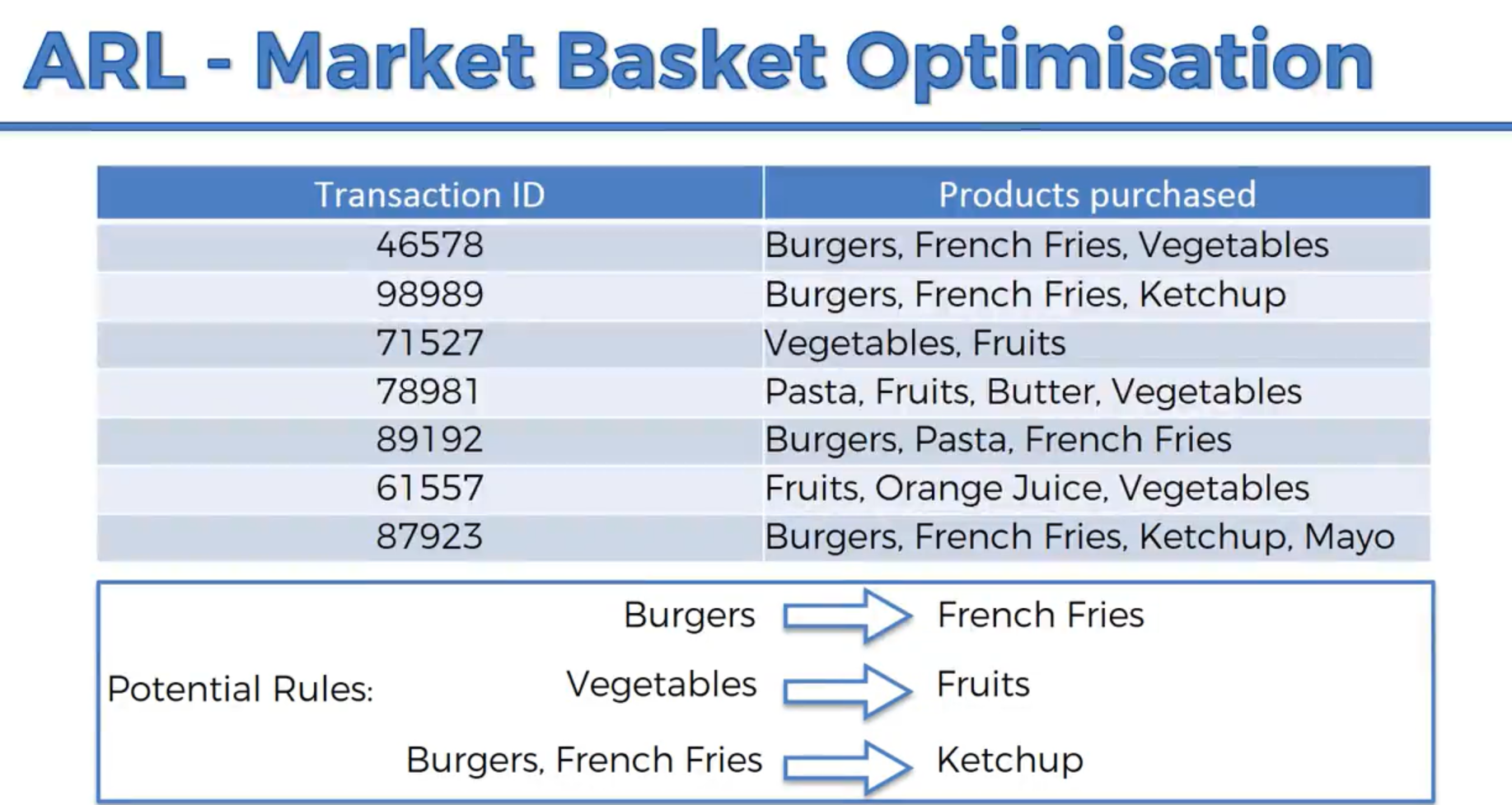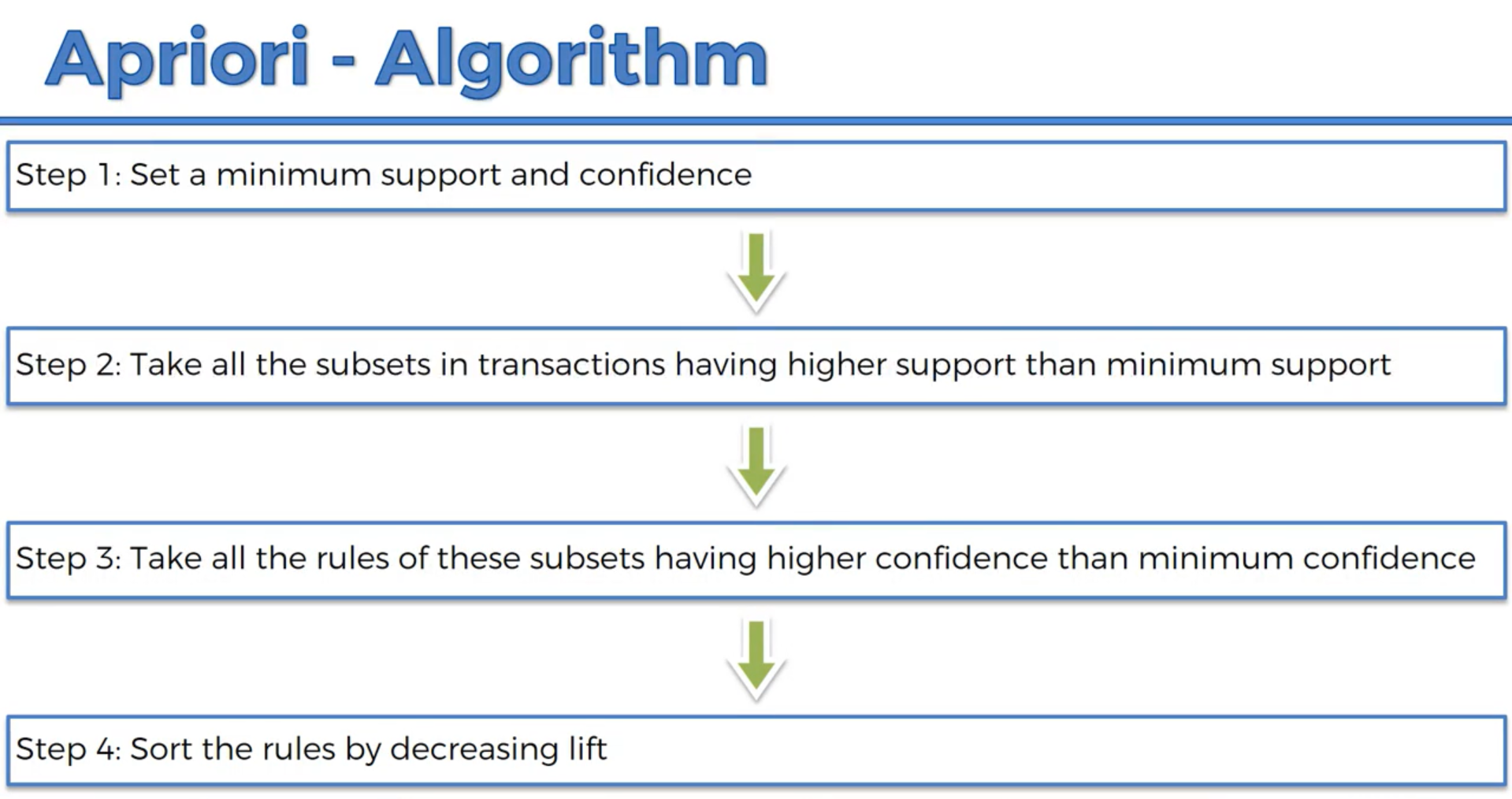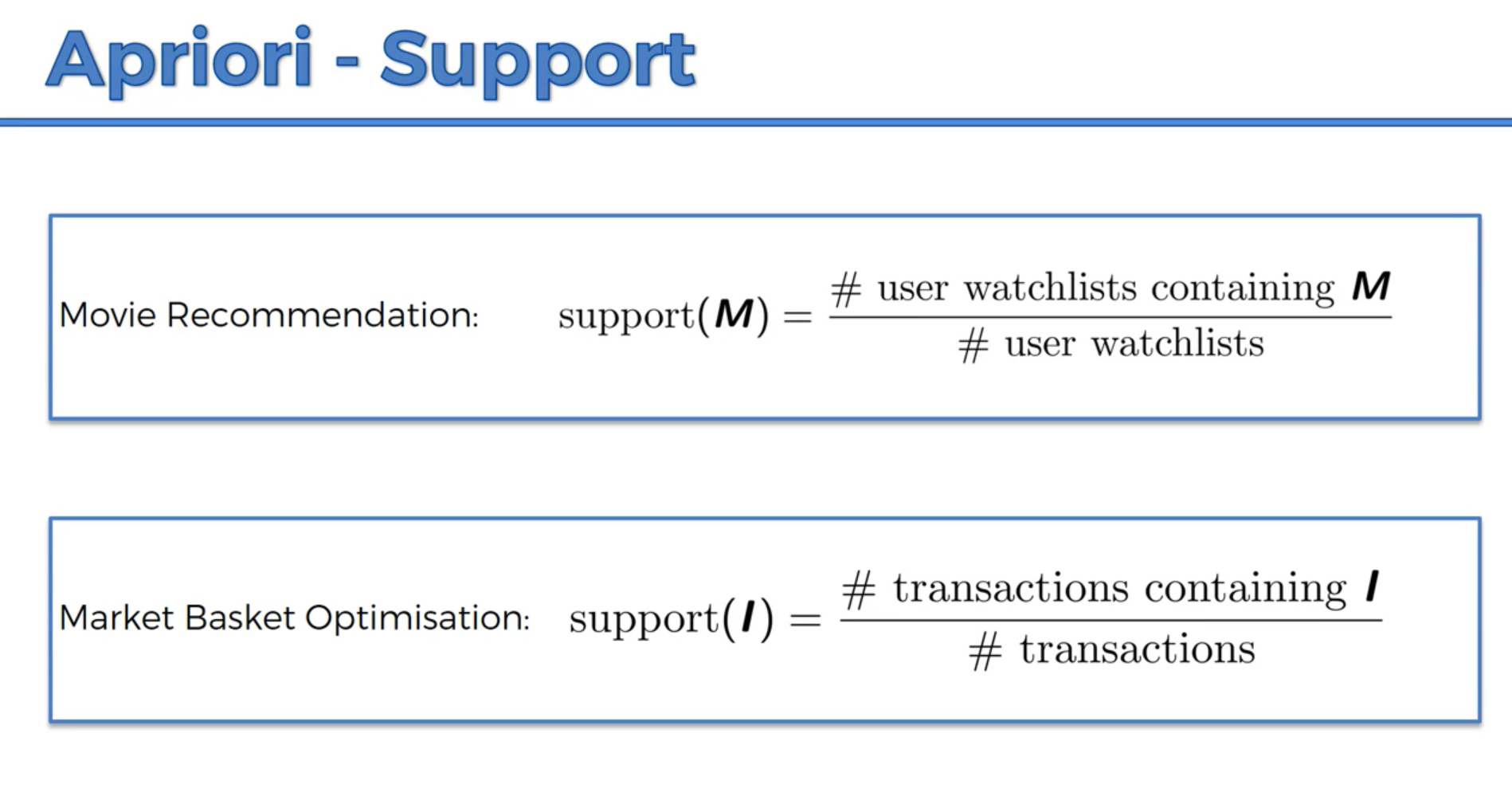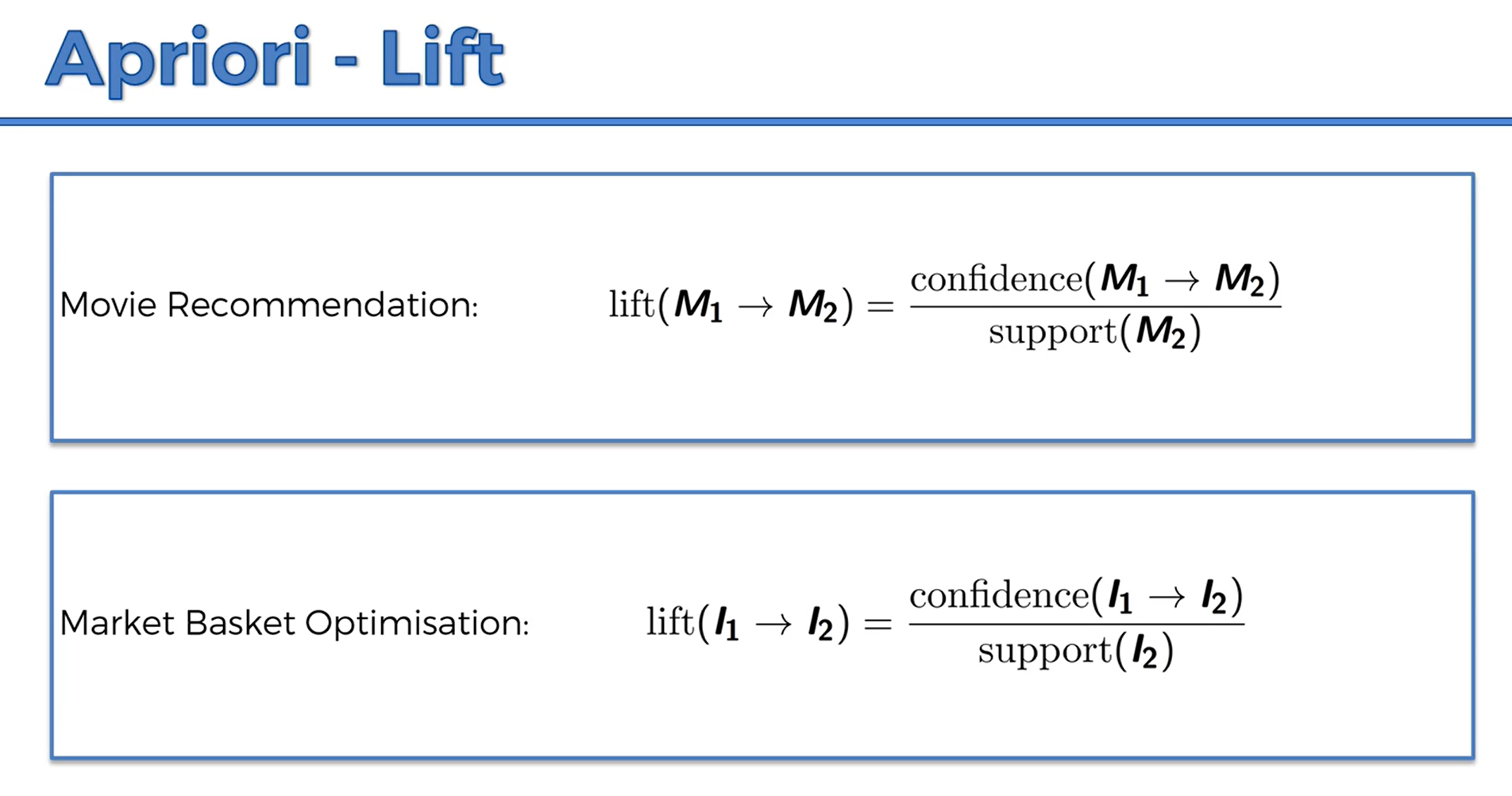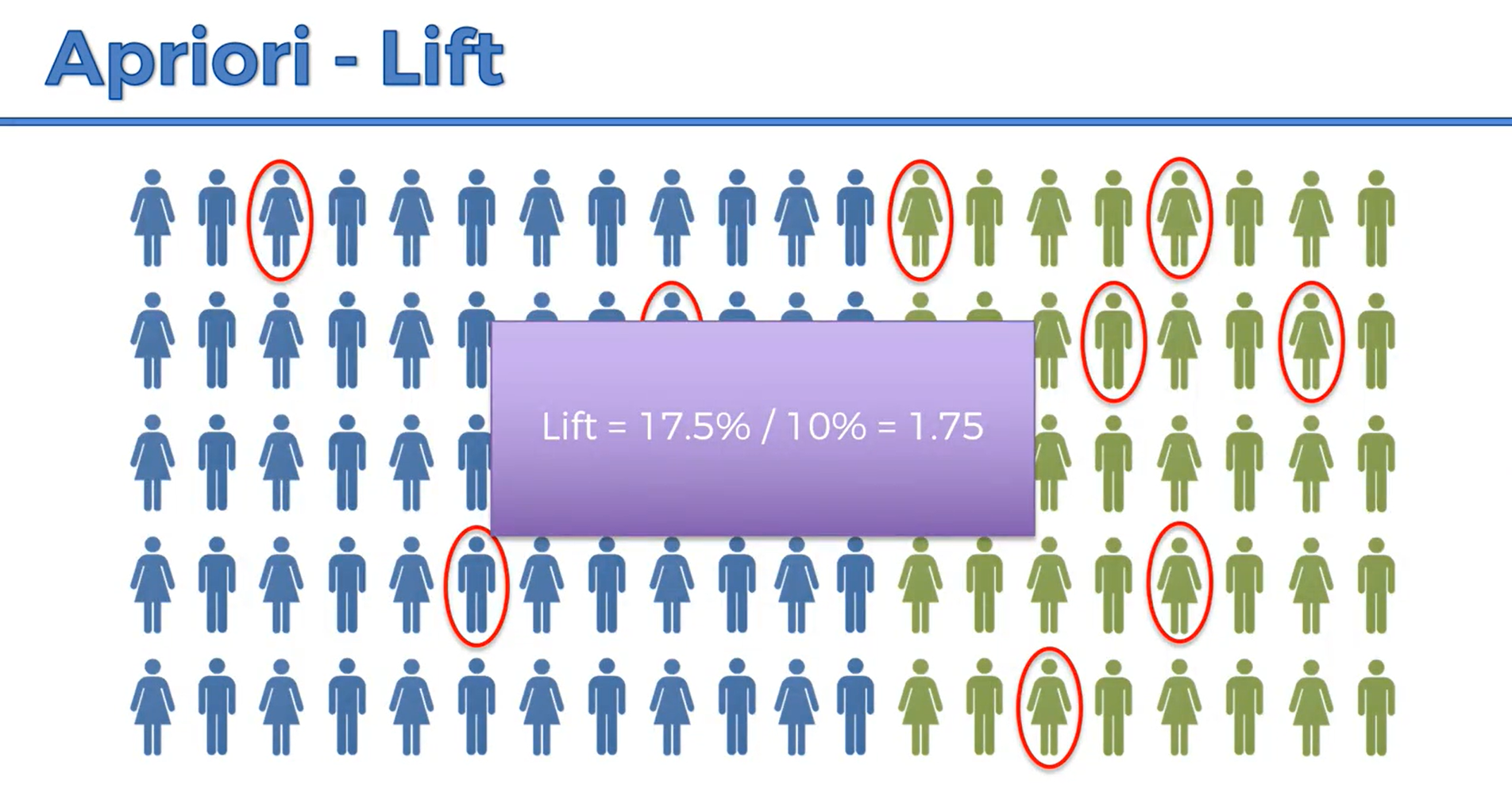This project uses an apriori algorithm from supermarket transaction data from a store in France to recommend product placement for higher sales revenue
ASSOCIATION RULE LEARNING APRIORI ALGORITHM
People who bought also bought, people who liked also liked...
Apriori is designed to operate on a database containing transactions. For example, collections of items purchased by by customers per transaction, or details of website visits frequency.
Apriori uses a bottom up approach, where frequent subsets are extended one item at a time, a step known as candidate generation and groups of candidates are tested against the data.
The Apriori algorithm has 3 parts to it: The Support, Confidence, and Lift
The Support is similar to the intuition for Naive Bayesian Classification. So we have number of users who watched Movie M divided by the total number of users in a dataset, or the number of customers who bought Product I divided by total number of transactions.
In step two we find the Confidence. The confidence is the number of occurences (tranactions) with transactions containing #Item1 and Item2 divided by transactions containing just Item1. We are testing a rule. Here we have a hypothesis that people who bought Item1 also are likely to like Item2. Or people who saw (we assume, liked) Movie1 also liked Movie2. We must be careful when building the algorithm to not set the confidence too high, otherwise items are the frequently bought in general like mineral water and eggs will be recommended together not because there is a special connection between them but rather, simply because they are the most frequently bought items.
In the last step we calculate the lift for each "Rule" or hypothesized association. The lift is basically the confidence divded by the support. So in the illustration below using our case of transactions, out of a population of 100, those in green are people who purchased mayonaise, and people circled in red are those that purchased scallops. If we take another random population, what is the likely hood if we recommend scallops, what is the likelyhood that they will like it, but now using prior knowledge that they like Mayonaise, hence Apriori. In this new population let's only recommend scallops to those that hay also purchased mayonaise and lemons. Or using a movie recommendation example, lets only recommend Ex Machina (not a particularly popular movie) to those who have seen Interstellar becuase we beleive they will have a greater chance of liking it or at least being curious and click that play button.
So we have a greater chance of that random person liking scallops if they are also purchasing mayonaise and lemons (or vice e versa) or likeing Ex Machina if they have seen Interstellar whereas without prior knowledge that they liked Interstellar there was only a 10% chance (the Support).
#The Model
Apriori is actually a slow algortihm becuase it goes through and looks at all possible combinations, therefore we need to set a minimum support so maybe set min support to 20% so dont even look at those. Then limit a confidence like in our example 17.5%. The key to optimizing and tweaking this algorithm is playing with the min support and confidence in the code. In the end sort them by lift and look at those with the highest lift. This also takes some manual inspection and making deducing if these combination really make sense.
#Considerations
Apriori works well but in real production such as Netflix or Amazon and in your own business, its probably best to use a combination of recommendation algorithms. Apriori is a good place to start to understand what is going on under the hood. For a small and growing business it should work well if the parameters such as support and confidence are set right. One can try different options and observe a one month trend and if revenue increases, keep those parameters. Or, try others and see if revenue increases even more. However, other factors such as seasonality and prices also affect these outcomes in this business case
